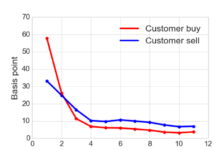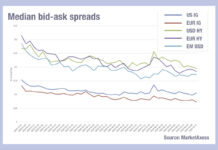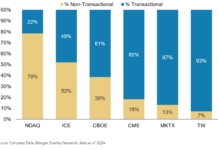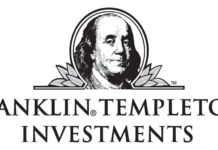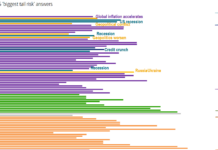A class-action lawsuit case alleging cartel behaviour by six prime brokers who “vacuum up 60% or more of the revenue generated by stock loan transactions” has been filed by the Iowa Public Employees’ Retirement System, Orange County Employees Retirement System and Sonoma County Employees Retirement Association on 16 August 2017 with the United States District Court, Southern District of New York.
The case is interesting in that it lionises “all-to-all” electronic trading, noting it provides greater price transparency, expands the number and type of potential counterparties, and does not involve a ‘middleman’ between the buyer and seller. Under the current arrangements, it notes that a pension fund might receive a lending fee of only 20 basis points on a stock for which a hedge fund paid a 50 basis points borrowing fee, with the spread in this example being 30 basis points, “virtually all of which is collected by the Prime Broker Defendants”.
The case also puts sell-side consortia under scrutiny, arguing that they can function as cartels in their capacity to set prices and direct trading activity. It specifically alleges a conspiracy took place to stifle competition in the stock lending market by brokers who it says, in 2001, formed a “dealer consortium” and the company/platform EquiLend, which the case alleges had an unstated purpose to “set up a vehicle through which the prime broker defendants could protect their privileged role as a broker on every stock loan trade.”
The complaint notes that, having recognised “the nascent threat posed by all-to-all electronic trading”, the prime broker defendants, named as Bank of America, Credit Suisse, Goldman Sachs, JP Morgan, Morgan Stanley and UBS, took steps to organise themselves into a “working cartel”. Furthermore the complaint makes claims about the brokers undermining rival efforts to create platforms.
“Prime broker defendants used membership in EquiLend as a pretext to meet and discuss how to protect their collective interests in the stock loan market. The prime broker defendants whose representatives served on EquiLend boards and committees discussed threats they saw to their privileged position in the market and how to combat them,” it says.
This case could open a can of worms. Collusion between dealers occurs in many over-the-counter markets where sell-side platforms have been constructed. Dealer-backed platforms have been a driver of electronification, although all-to-all trading has never been their first choice of trading protocol. Yet neither is all-to-all a panacea – without a middleman, two counterparties are at each others mercy. In a lending or repo scenario, that could make reconciliation and restitution challenging.
While there is no allegation that other platforms have been used as “working cartels” to use the complaint’s own term, the complaint is able to cite collusion in LIBOR, credit default swaps, municipal bonds, interest rate swaps (ISDAFix) and the spot foreign exchange markets as prior examples of such behaviour. The next steps are likely to include a motion to dismiss, which could take months, and if the case continues the discovery process, which will also take many months.
Its outcome could increase the need for transparency around other dealer consortia, which stretch from the equity markets to fixed income markets. For example, many distributed ledger platforms are being developed as consortia, and concern about exclusivity is already a key legal issue.
As OTC markets become increasingly electronified, the sell side will need to ensure its efforts to defend commercial models are not overstepping the mark.
©TheDESK 2017


